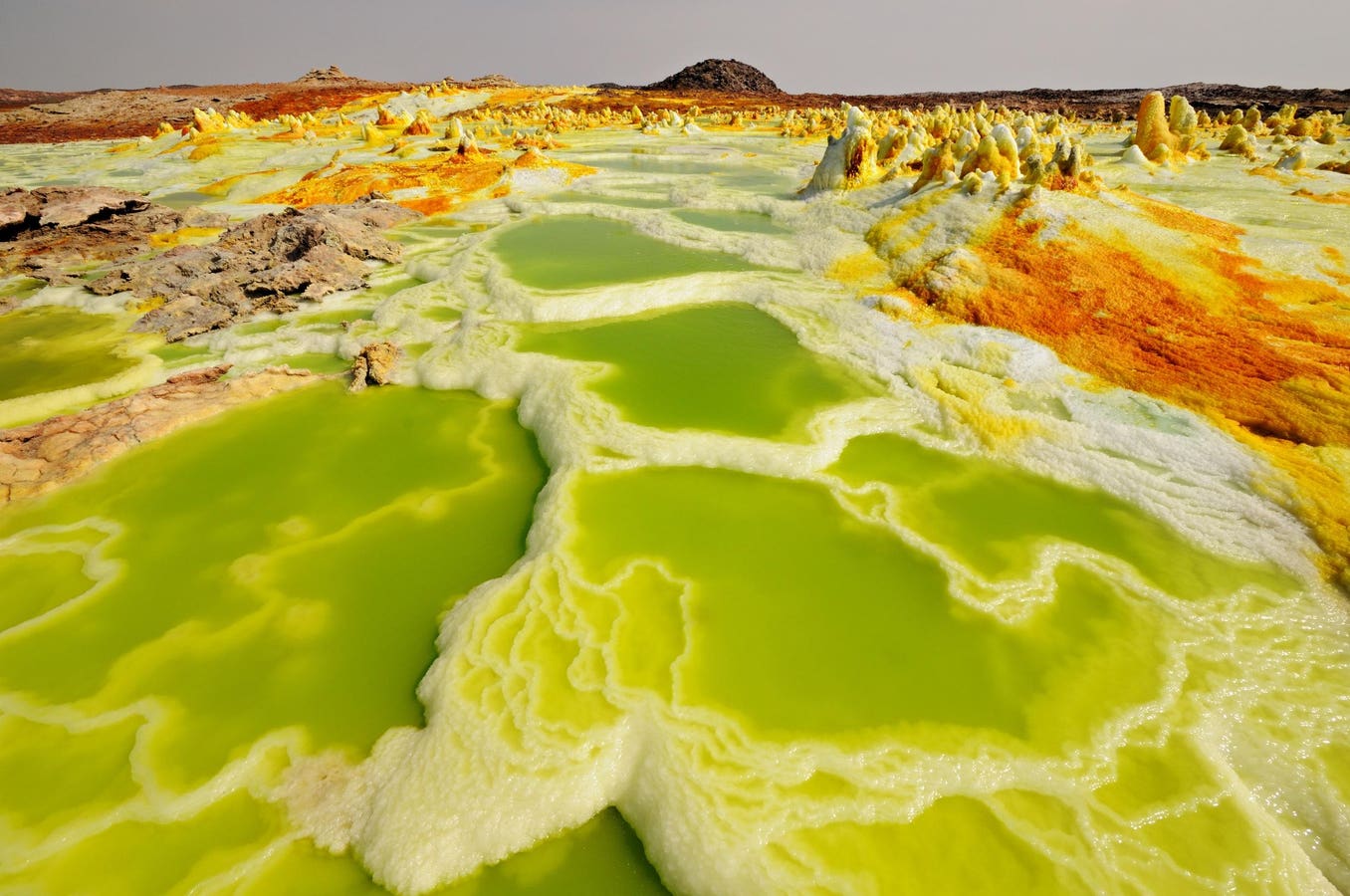
The Danakil Desert in Ethiopia, characterized by its acidic lakes, offers a glimpse into what our planet may have resembled … [+]
getty
Liquid water was present on Earth approximately 4.1 billion years ago, leading to the formation of the first oceans around 4 billion years ago. However, these early oceans were extremely acidic, hindering the development of life on Earth for the initial 500 million years.
“To uncover the origins of life, it’s crucial to explore when and how Earth began to hold oceans with a more neutral pH,” states Meng Guo, a former graduate student at Yale and now a prestigious postdoctoral fellow at Nanyang Technological University in Singapore. He is the lead author of a recent study tackling this issue.
An acidic environment, having a pH less than 7, can impede the formation of organic compounds and harm living tissues; in contrast, the pH of contemporary seawater is around 8.
“Modeling the long-term changes in ocean pH presents significant challenges, as it encompasses almost all elements of the Earth system, including the atmosphere, the oceans, the crust, and the mantle,” explains Guo.
“This project is a remarkable theoretical achievement, bridging the gap between surface phenomena and deep Earth processes,” notes co-author Jun Korenaga, a professor of Earth and planetary sciences at Yale University.
For instance, the pH level of the oceans is significantly influenced by atmospheric carbon dioxide, which is affected by various geological factors. In its early stages, Earth was enveloped by a thick atmosphere rich in water vapor and carbon dioxide, primarily resulting from volcanic activity on the still cooling planet. Over time, geological processes gradually diminished the levels of carbon dioxide.
Korenaga and Guo meticulously calibrated their study to assess how these processes interact with one another.
“Our ability to conduct this modeling effectively has greatly improved due to advancements in our understanding of early Earth tectonics in recent years,” adds Korenaga.
Geological formations such as the 4.01-billion-year-old Acasta Gneiss suggest that plate tectonics was already in motion on Earth at this time. The collision of tectonic plates typically leads to mountain formation, which accelerates weathering and erosion. During the process of subduction, one plate is pushed beneath another, burying sediments rich in carbon dioxide, such as limestone. These processes gradually lower the carbon dioxide levels in both the atmosphere and the oceans.
Through their innovative model, Guo and Korenaga project that it would have taken approximately 500 million years for Earth to sufficiently neutralize ocean acidity to enable life.
Currently, the oldest confirmed evidence of life on Earth is found in 3.5 billion-year-old dome-shaped sedimentary formations created by microorganisms. However, some experts speculate that iron and carbon formations discovered in the hydrothermal veins of the Nuvvuagittuq Greenstone Belt in Quebec, Canada, may represent remnants of ancient microbial life. This collection of sediments and volcanic rocks is older than 4 billion years. However, the recent findings suggest that these concretions are unlikely to be fossils.
The researchers conclude that their work not only enhances our understanding of ancient Earth processes but also highlights their relevance to contemporary climate dynamics and its long-term changes.
The study, titled “Rapid rise of early ocean pH under elevated weathering rates,” appeared in the journal Nature Geoscience.
Further insights and interviews were provided by Jim Shelton, Yale University.









